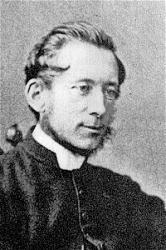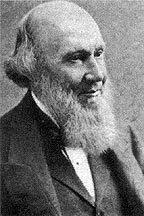Planning worship?
Check out our sister site, ZeteoSearch.org,
for 20+ additional resources related to your search.
- |
User Links
Search Results
Though Lowly Here Our Lot May Be
Author: William Gaskell Appears in 36 hymnals Used With Tune: ST. AGNES, DURHAM
Though Lowly Here Our Lot May Be
ST. AGNES, DURHAM
Appears in 1,138 hymnals Composer and/or Arranger: Rev. J. B. Dykes, Mus. Doc. Tune Key: G Major Incipit: 33323 47155 53225 Used With Text: Though Lowly Here Our Lot May Be
ST. AGNES, DURHAM
HOLY CROSS
Appears in 174 hymnals Composer and/or Arranger: James C. Wade Incipit: 53215 76512 52235 Used With Text: Tho' lowly here our lot may be
HOLY CROSS
Though Lowly Here Our Lot
Author: William Gaskell, 1805-1884 Hymnal: The Cyber Hymnal #6665 Meter: 8.6.8.6 First Line: Though lowly here our lot may be Lyrics: 1. Though lowly here our lot may be,
High work have we to do,
In faith and trust to follow Him
Whose lot was lowly, too.
2. Our lives, enriched with gentle thoughts
And loving deeds, may be
A stream that still the nobler grows,
The nearer to the sea.
3. To duty firm, to conscience true,
However tried and pressed,
In God’s clear sight high work we do,
If we but do our best.
4. Thus may we make the lowliest lot
With rays of glory bright;
Thus may we turn a crown of thorns
Into a crown of light. Languages: English Tune Title: RAPHAEL (Oratory)
Though Lowly Here Our Lot
Though Lowly Here Our Lot May Be
Author: William Gaskell Hymnal: The New Canadian Hymnal #222 (1916) Topics: Devotional; Morning and Evening Tune Title: ST. AGNES, DURHAM
Though Lowly Here Our Lot May Be
Though Lowly Here Our Lot May Be
Author: William Gaskell Hymnal: The New Canadian Hymnal #222 (1921) Languages: English Tune Title: ST. AGNES, DURHAM
Though Lowly Here Our Lot May Be
John Bacchus Dykes

1823 - 1876 Person Name: Rev. J. B. Dykes, Mus. Doc. Composer of "ST. AGNES, DURHAM" in The New Canadian Hymnal As a young child John Bacchus Dykes (b. Kingston-upon-Hull' England, 1823; d. Ticehurst, Sussex, England, 1876) took violin and piano lessons. At the age of ten he became the organist of St. John's in Hull, where his grandfather was vicar. After receiving a classics degree from St. Catherine College, Cambridge, England, he was ordained in the Church of England in 1847. In 1849 he became the precentor and choir director at Durham Cathedral, where he introduced reforms in the choir by insisting on consistent attendance, increasing rehearsals, and initiating music festivals. He served the parish of St. Oswald in Durham from 1862 until the year of his death. To the chagrin of his bishop, Dykes favored the high church practices associated with the Oxford Movement (choir robes, incense, and the like). A number of his three hundred hymn tunes are still respected as durable examples of Victorian hymnody. Most of his tunes were first published in Chope's Congregational Hymn and Tune Book (1857) and in early editions of the famous British hymnal, Hymns Ancient and Modern.
Bert Polman
John Bacchus Dykes
E. J. Hopkins

1818 - 1901 Person Name: Edward J. Hopkins, 1818-1901 Composer of "ST. HUGH" in Hymns for Schools and Colleges Dr Edward John Hopkins MusDoc United Kingdom 1818-1901. Born at Westminster, England, the son of a clarinetist with the Royal Opera House orchestra, he became an organist (as did two of his brothers) and a composer. In 1826 he became a chorister of the Chapel Royal and sang at the coronation of King William IV in Westminster Abbey. He also sang in the choir of St. Paul’s Cathedral, a double schedule requiring skill and dexterity. On Sunday evenings he would play the outgoing voluntary at St. Martin’s in-the-field. He left Chapel Royal in 1834 and started studying organ construction at two organ factories. He took an appointment at Mitcham Church as organist at age 16, winning an audition against other organists. Four years later he became organist at the Church of St. Peter, Islington. In 1841 he became organist at St. Luke’s, Berwick St., Soho. Two Years later he was organist at Temple Church, which had a historic organ (built in 1683). He held this position for 55 years. In 1845 he married Sarah Lovett, and they had four sons and five daughters. He was closely associated with the Bach Society and was organist for the first English performances of Bach’s St. Matthew Passion. In 1855 he collaborated with Edward Rimbault publishing “The organ, its history and construction” (3 editions 1855-70-77). In 1864 he was one of the founders of the “College of organists”. In 1882 he received an honorary Doctorate of Music from the Archbishop of Canterbury. He composed 30+ hymn tunes and some psalm chants, used by the Church of England. He died in London, England.
John Perry
E. J. Hopkins
Anonymous
Person Name: Unknown Composer of "TOTTENHAM" in The Day School Hymn Book In some hymnals, the editors noted that a hymn's author is unknown to them, and so this artificial "person" entry is used to reflect that fact. Obviously, the hymns attributed to "Author Unknown" "Unknown" or "Anonymous" could have been written by many people over a span of many centuries.
Anonymous


 My Starred Hymns
My Starred Hymns

